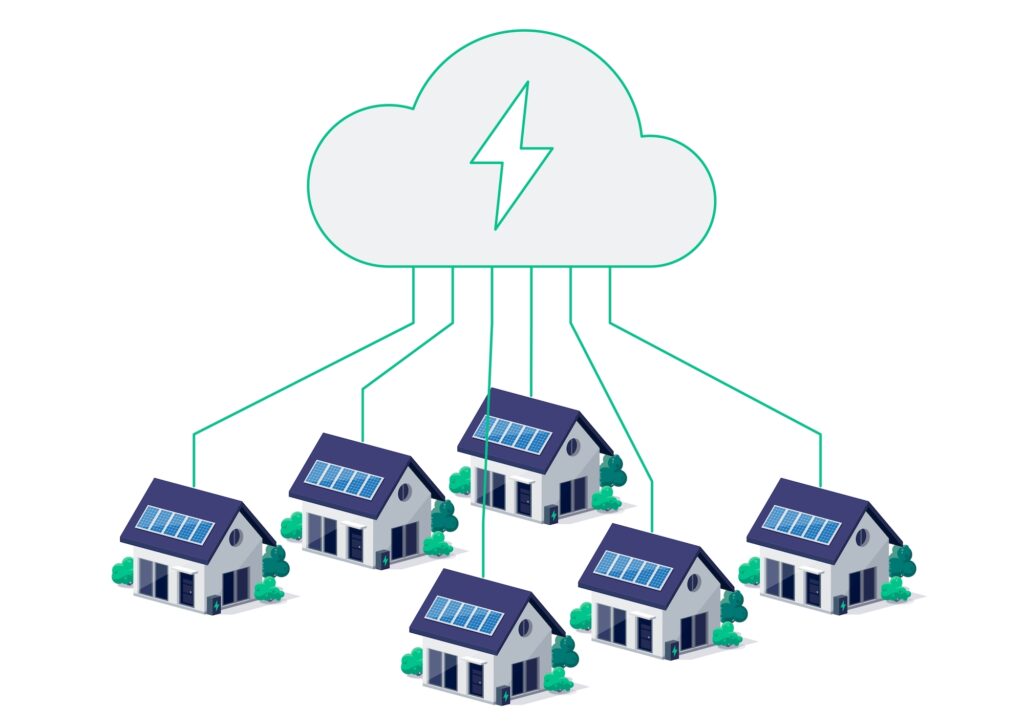Virtual power plants (VPP) have been around for a while now, with early examples almost a decade old, yet mass adoption has been limited so far. However, as technology and policy mature in an increasingly volatile energy landscape, the case for VPPs has begun to rise once again around the world. We have seen a steady rise in the residential sector, especially in homes, but with new funding mechanisms emerging within a new tech and policy landscape, commercial buildings are poised to seize the VPP opportunity.
Fortune Business Insights projects the global VPP market to grow to $6.47 billion by 2028, up from its 2021 level of $0.88 billion. By 2025, $110 billion is expected to be invested in distributed energy resources (DERs), partly fueled by the United States Loan Programs Office. That’s $5 billion every month, accelerating to more than $20 billion per month by the decade’s end, according to Wood Mackenzie data. And, in January 2023, major companies including GM and Ford, and Google, alongside solar energy producers, announced they will work together to establish standards for scaling up the use of virtual power plants as electrification of the US economy as demand for power grows.
Cloud services provider AWS defines VPPs as, “a connected aggregation of clean distributed energy resources (DER) — solar, storage, grid-interactive efficient building equipment, EV charging, controls and more — remotely and automatically controlled to deliver affordable power, reliability, decarbonization and grid services. VPPs are utility-scale (large) and utility-grade (reliable, controllable) and thus a de facto power plant that is connected virtually from multiple locations.”
In other words, a VPP is potentially any grid-connected building that generates and stores electricity which, when combined into a network of buildings, can create significant power grid balancing benefits. For the buildings themselves, the VPP approach can eliminate electricity costs and even create revenue by selling power to the grid. With public locations and daytime demand, commercial buildings are perfectly positioned to take advantage of VPPs to meet and surpass their sustainability and regulatory goals.
In commercial buildings, emerging IoT technologies are intrinsically linked to the VPP model, as IoT devices and sensors enable the seamless management and optimization of DERs within the VPP framework. IoT devices collect real-time data on energy generation and consumption patterns, allowing VPP software to make informed decisions about the optimal distribution of energy resources.
The IoT also facilitates communication between the VPP and integrated DERs, enabling automatic adjustments to demand response and energy consumption patterns. This synergy between VPPs and IoT not only enhances the energy efficiency of smart commercial buildings but also contributes to more intelligent, data-driven, and sustainable energy management on a grid level.
“Alone, these disparate energy providers are too small to meet the energy demands of a traditional power substation. By pooling their resources, however, they can look and behave as if they were a single, large-capacity energy source,” said Roberto Rodriguez Labastida, senior research analyst at Guidehouse. “It’s an alternative to actual power plants and can shed or shift loads, usually at a megawatt-scale. VPPs can supplement traditional power plants in many important ways.”

The emergence of connected vehicles also plays a significant role in the rise of VPPs. Electric vehicles (EVs) in the US crossed the long-anticipated 5% point of sales in 2022, which many consider a tipping point. Electric car batteries can hold approximately 60-kilowatt hours (kWh) of energy that can be used to support the power needs of an average US household.
In a recent example, a Ford F-150 Lightning powered a home in Ontario for two days during a power outage caused by a massive snowstorm. EVs parked at commercial buildings can help store excess renewable energy during peak generation hours, then release it when needed, like a fleet of batteries.
Taking an innovative new approach to EV charging, Taiwanese scooter battery swapping firm Gogoro has teamed up with Enel X VPP. Gogoro will provide 2,500 of its GoStations which will provide about 150-megawatt hours of battery capacity, and Enel X is managing and selling that power back to Taiwan Power Company. This model creates potential for commercial buildings, especially those located in busy areas, to expand battery capacity and scale up VPP benefits.
“We are entering a new era of smart energy infrastructure, and by integrating the Gogoro Network with the Enel X VPP, we are providing a new energy resource,” said Horace Luke, Gogoro’s CEO and founder. “It is the first time this technology has been deployed this way in the world, and it creates a new Gogoro revenue stream beyond mobility.”
The growing adoption of VPPs signals a paradigm shift in the way we perceive and manage energy resources. The fusion of VPPs, IoT, and connected vehicles is transforming energy infrastructure, making it more intelligent, adaptable, and sustainable. As VPPs become more widely embraced, they will reshape the energy landscape and challenge the status quo of power generation and distribution. As we transition toward a future with smart energy systems and cleaner power sources, the adoption of VPPs will be instrumental in driving global sustainability and environmental efforts.
“Renewables are positioned to overtake coal this decade as the most popular way to generate electricity,” author Jennifer Castenson writes in an article for Forbes, showing solar power is now cheaper than natural gas and coal across most of the US. “Those cheaper costs along with government efforts to slash climate-damaging emissions will increasingly push coal off the grid and give renewables 80% of the market for new power generation by 2030… This accelerating trend is paving the way for the virtual power plant.”



